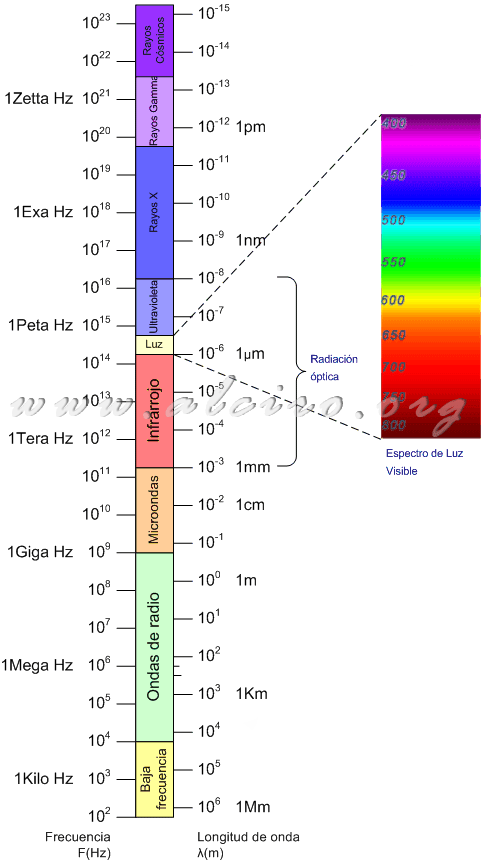Visible light spectrum
Optical radiation is electromagnetic radiation of wavelength between the microwave (1 mm) and X-ray (1 nm).
Within the spectrum of optical radiation is a small band between 400 nm and 700 nm which is detectable by the human eye. In this room is called radiation visible light spectrum.
At the bottom we have the infrared radiation, the so-called thermal or IR radiation. All bodies emit radiation energy characteristics of matter, and the maximum exponent that occurs in the infrared area.
At the top is ultraviolet or UV radiation that can be found mainly in solar radiation, is produced in electric arcs through some specialized devices such as UV fluorescent tubes, also called black light. Widely used in industry, being an ionizing radiation is used to cause chemical reactions, sterilization of products etc. In certain substance produces the effect of brightness or fluorescence, using this feature for identification and control of substances and objects. UV rays have many beneficial and harmful effects on human health of all aware of the effect of prolonged exposure to sunlight, especially in the middle of the day is when the radiation is more intense.

Optical radiation, visible light spectrum
The perception of color depends on the wavelength when light strikes a body, it reflects more strongly some wavelengths than others. This to be perceived by the human eye determines the characteristic color of the body. Of course, the perception of each color varies from person to person.
| Red | 700 to 630 nm |
| Orange | 630 to 600 nm |
| Yellow | 600 to 570 nm |
| Green | 570 to 520 nm |
| Cian | 520 to 480 nm |
| Blue | 480 to 430 nm |
| Violet | 430 to 400 nm |







